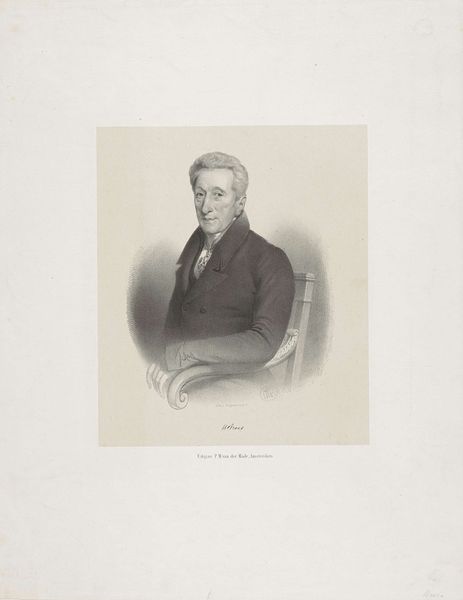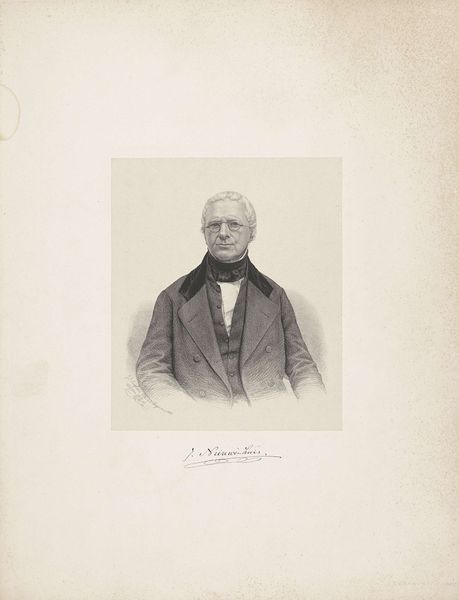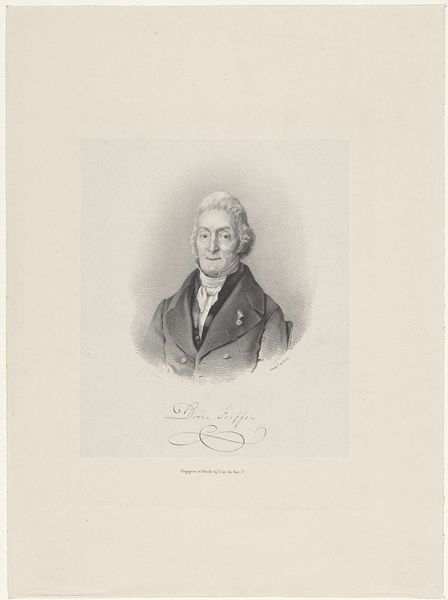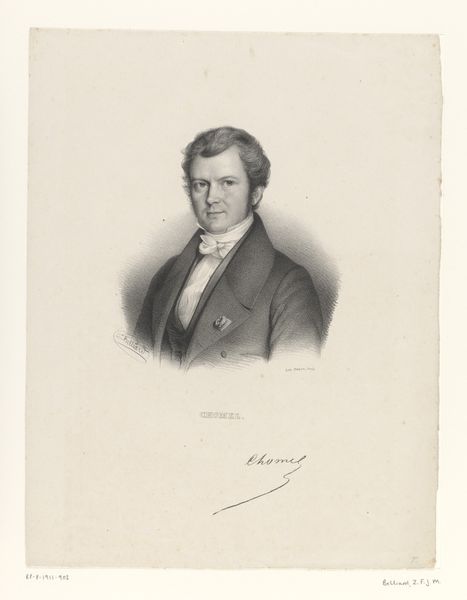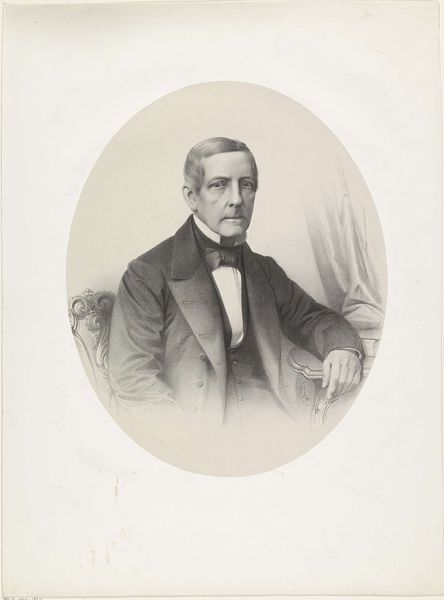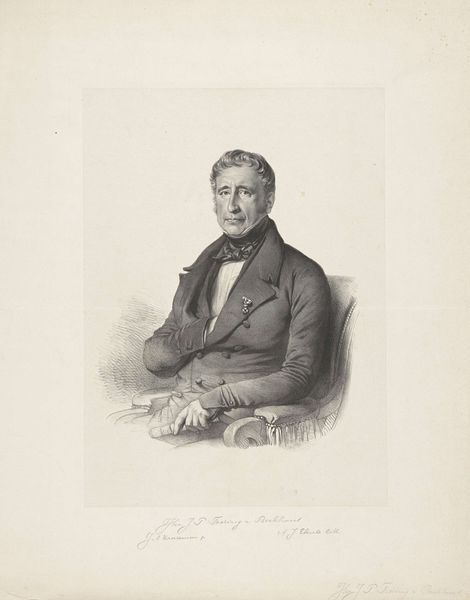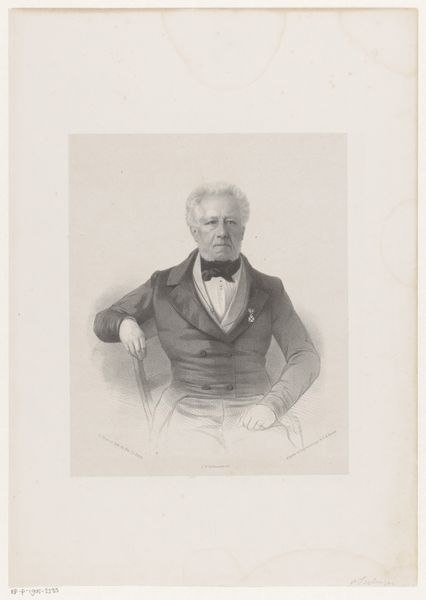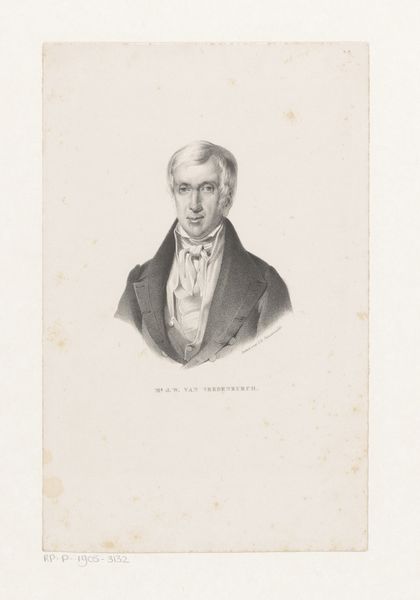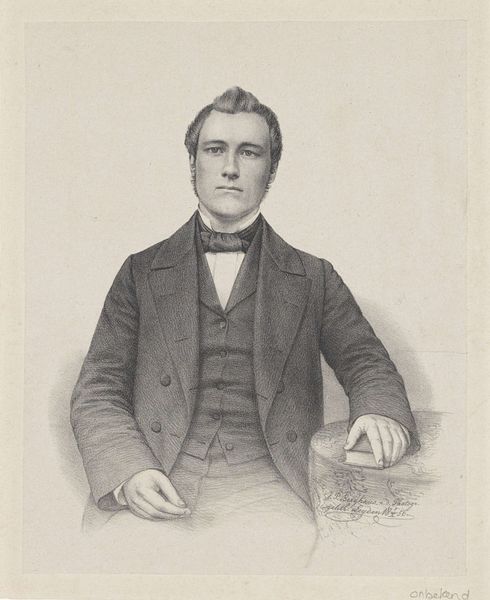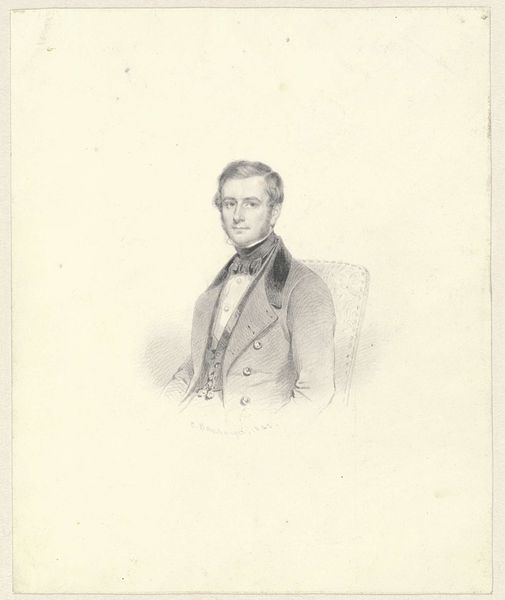
drawing, pencil
#
portrait
#
pencil drawn
#
drawing
#
light pencil work
#
pencil sketch
#
classical-realism
#
figuration
#
portrait reference
#
pencil drawing
#
romanticism
#
pencil
#
yellow element
#
limited contrast and shading
#
portrait drawing
#
pencil work
#
yellow accent
Dimensions: height 560 mm, width 430 mm
Copyright: Rijks Museum: Open Domain
Editor: This is a pencil drawing titled "Portret van Abraham Johannes Couwenberg," created between 1818 and 1863 by Isaac Cornelis Elink Sterk. The subject is a man, finely dressed. It seems very typical of its time, quite formal. What strikes you about this portrait? Curator: The formality you observe speaks to the rise of the bourgeoisie and their aspirations for social standing during this period. Portraiture became a powerful tool for self-representation and constructing identity. Notice his hand gesture and clothing: how might they be signaling social status? Editor: It looks like a conscious pose, meant to convey confidence or authority perhaps? And the quality of clothing and the spectacles too speak of education. But why a pencil drawing instead of a painting? Curator: Excellent point! The choice of pencil reflects changing artistic values and the accessibility of art production. Lithography, a more reproductive technology, made images like these accessible to a wider public. Consider how this impacts the exclusivity traditionally associated with painted portraits. It becomes almost democratic, in a way. Editor: So it’s not just about aesthetics, but also about who gets to participate in art, both as a subject and audience? It is a subtle power dynamic isn't it? Curator: Precisely. The rise of a merchant class wanting to mimic the styles of aristocrats also put a pressure on artistic representation. Now they have disposable incomes to collect and the art institution has a pressure to deliver works. That's why its presence at the Rijksmuseum matters – what does this signify when displayed in such an institution? Editor: I hadn’t thought about it that way! Seeing it here gives it validity and permanence that it might not have had. Thanks! Curator: Indeed. Considering the institutional framing helps us understand the layers of meaning embedded in what appears, on the surface, as simply a man's portrait.
Comments
No comments
Be the first to comment and join the conversation on the ultimate creative platform.
